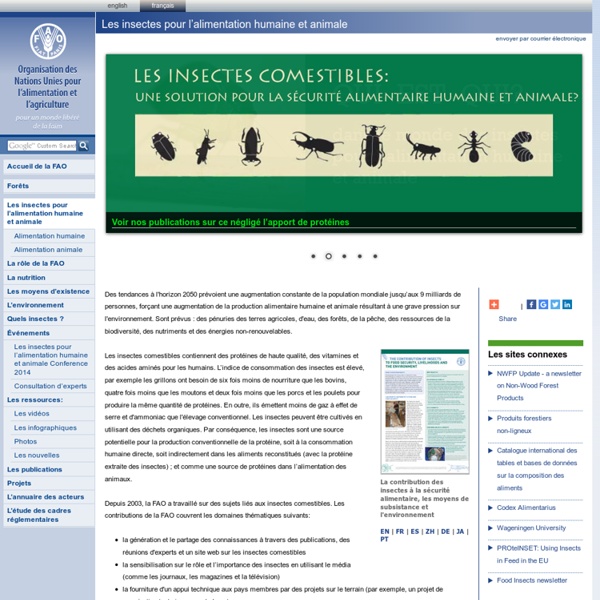



Les insectes seront-ils l'avenir de l'humanité ? La consommation de protéines animales à l’échelle mondiale va en s’accroissant : les conséquences sur les écosystèmes et le climat deviennent alarmantes, avec des répercussions sur les cycles naturels du carbone et de l’azote. Une solution pourrait provenir des insectes. En prenant en compte la totalité des processus de production consacrés à l’élevage (depuis l’amont jusqu’à l’aval de la filière), ce secteur d’activité représenterait 18 % des émissions anthropiques de gaz à effet de serre Gaz à effet de serre Gaz s’accumulant dans l’atmosphère et susceptibles de contribuer au réchauffement climatique en absorbant le rayonnement infrarouge. et 64 % des émissions d’ammoniac. Intérêt alimentaire des insectes Vente de "chapulines" (criquets du genre Sphenarium) grillés et épicés sur un marché mexicain Crédit photo : frankenschulz. Avantages environnementaux Criquet migrateur (Locusta migratoria) en Thaïlande Crédit photo : haemengine. Sources :
Que risque-t-on à manger des insectes ? Le Monde.fr | • Mis à jour le | Par Audrey Garric On le sait, l'alimentation à base d'insectes pourrait bien se généraliser au cours des prochaines décennies. L'Organisation des Nations unies pour l'alimentation et l'agriculture (FAO) s'est prononcée en faveur du développement de l'élevage de petites bêtes à grande échelle pour parvenir à nourrir plus de 9 milliards d'êtres humains d'ici à 2030. Deux milliards de personnes en consomment déjà, particulièrement en Afrique, en Asie et en Amérique latine. Cette étude, entamée à la fin de l'année 2013, a consisté à dresser un état des lieux des connaissances scientifiques sur le sujet, réalisé avec l'unité d'entomologie fonctionnelle et évolutive de l'université de Liège en Belgique, puis à réaliser une analyse approfondie auprès d'un collectif d'experts, spécialisés en biologie, chimie, alimentation animale ou encore allergies. Risques d'allergies « Ces risques sont les mêmes que pour d'autres aliments plus communs, comme la viande.